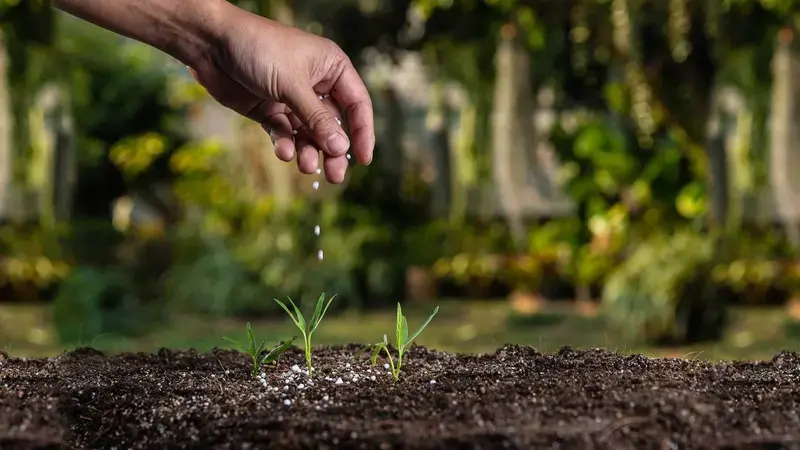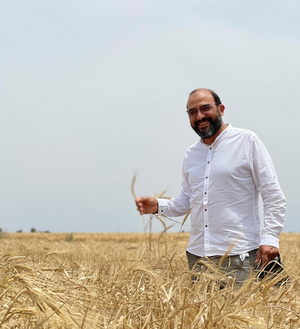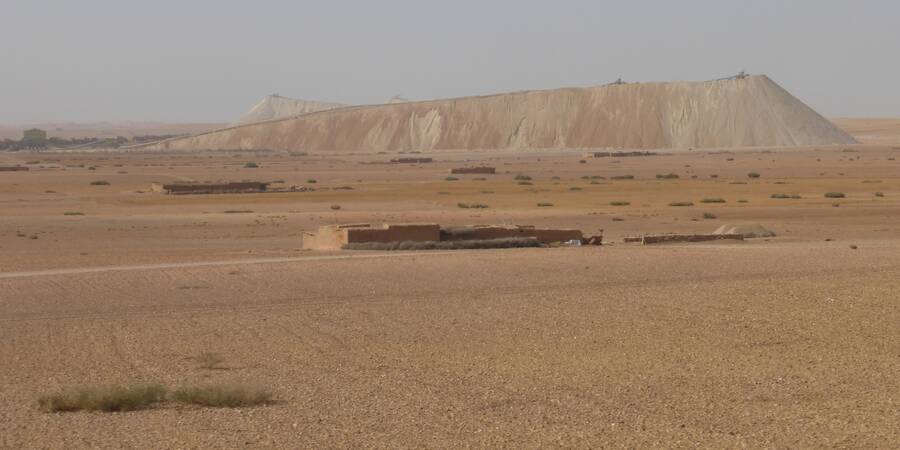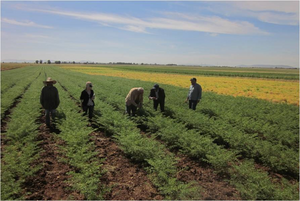Combatting the fertilizer crisis – an ICARDA Q&A

Urea, phosphates, potash, nitrates, ammonia…while fertilizers might not be recognized by all, they are incredibly important to farmers who use them to achieve good harvests and income, especially as the climate crisis continues to challenge agricultural systems worldwide. Whether manufactured, synthetic or made from natural substances, fertilizers are added to the soil to increase its fertility and help produce better crop yields.
The ongoing conflict in Ukraine, which has disrupted the cultivation and the trade of wheat and other key crops at the global scale, has also harmed the fertilizers sector. As a result, the price of these crucial inputs has hiked, making fertilizers hard to afford for most small landholders in the drylands and elsewhere. Remarkably, Morocco is bound to play a role in alleviating the current fertilizer and food crises.

- Farmers worldwide are affected by the global fertilizer crisis. What are the underlying causes of the shortage, and how does it affect dryland farmers?
Rachid Moussadek: Until the conflict, 40% of the world’s exported potash originated from Russia and Belarus, while 28% of all nitrogen and phosphorus-based fertilizers hailed from Russia and Ukraine. Because of the conflict, shipment routes have been disrupted. Due to connected geopolitical impacts, the price of energy - especially natural gas needed to produce ammonia - is skyrocketing.
The decrease in fertilizer supplies and their higher prices primarily impact farmers, and most of all poor, smallholder farmers from low-income countries, who cannot afford the new prices. They are left with no choice but to reduce their use of fertilizers at the risk of lower yields and incomes. This is especially problematic in the drylands, where the yield gap – the difference between the potential and actual yield – is still very high, and fertilizers’ inputs remain low.
- Morocco has the largest reserves of phosphates in the world – with which phosphorus fertilizer, essential for plant nutrition, is manufactured. What part will Morocco play in helping stabilize the current fertilizer crisis and support global food security?
RM: Morocco possesses 70% of the world’s phosphate reserves, giving it a distinct advantage in producing phosphorus fertilizers, which it supplies domestically, and exports.
In response to the crisis, the Office Chérifien des Phosphates (OCP) Group - the Moroccan state-owned phosphate rock miner, phosphoric acid manufacturer, and fertilizer producer - has announced its intention to increase its fertilizer production by 10% this year, which will add 1.2 million tons of fertilizers to the global market.
The group has also allocated nearly half a million tons of fertilizer to African countries - either for free or at a very low cost - to help farmers maintain good yields and production levels despite soaring prices.

- As a soil health expert, which would you say are the most environmentally friendly and effective types of fertilizers?
RM: How fertilizers are used dictates whether they are eco-friendly or not. Used rationally, mineral fertilizers improve crop yields and enhance soil health without negatively affecting the environment. However, excessive fertilizer use can cause pollution problems, while insufficient application often leads to low crop productivity and depleted soil fertility.
In the world's dry areas, where low carbon content in the soil is very commonplace, mixing inorganic and organic fertilizers (like compost or biochar) is often a good way to enhance soil fertility and nutrients. What is also crucial is to promote sustainable soil/crop nutrition management methods and to follow a climate-smart agriculture approach that takes care of the environment, especially the soil.
Outside of productivity, the other key output that farmers are looking for is stability - which can be improved by undertaking a system’s approach. Leveraging sustainable agronomic practices (such as well-adapted varieties, no or minimal soil tillage, crop rotations, etc.) is key, and digital fertility tools - like the fertility map project developed in Morocco and other African countries to support sustainable use of fertilizers - are also very helpful.

In the end, it is all about protecting the soil. In fact, two CGIAR partner-led initiatives in which ICARDA is involved, F2R-CWANA and Excellence in Agronomy, align with Morocco’s “Green Generation 2020-2030” national strategy, which will deploy conservation agriculture on one million hectares of arable land.
The CGIAR initiatives will provide further research to support climate-smart agronomy and Morocco’s 10-year strategy. Conservation Agriculture is a soil-friendly system that relies on four main pillars: no - or minimal - tillage to the soil after harvest; permanent soil cover to lock in moisture and reduce evaporation; and crop diversification replacing monocropping. This initiative will help promote soil health, improve food security, and stabilize yields.
- Half of the world’s food is produced using fertilizers. So, it is hard to imagine that farmers would entirely stop buying it, even as prices rise. What have been the coping mechanisms of small landholders in Morocco and elsewhere in the drylands once fertilizers became unaffordable, and how can centers like ICARDA help?
RM: Many smallholder farmers in this region now purchase fewer fertilizers due to the price hike. Without a doubt, this will worsen the current food crisis.
One way to support farmers under these circumstances is to use Digital fertility mapping and tools such as 4R Nutrient Stewardship Framework - which I contributed to developing. The four “Rs” stand for ‘right source, right rate, right time, and right place,’ and guide farmers on best nutrient management practices to help keep the nutrients in the ground rather than tire the soil out. With 4R, we can help farmers who can only afford a fraction of the fertilizer they need and allocate it in the most efficient way possible - for the best yield outcomes and with the smallest impact on the soil.
The public sectors and governments can also support farmers in arid areas by conducting soil analysis every two or three years to evaluate the ideal dose of fertilizer to apply to crops without damaging the soil. Research entities like ICARDA, INRA, and local partners must also share their knowledge on fertilizer use efficiency with extension services and farmers – to improve small farmers’ fertilizer use across the region.
Read more about ICARDA's Soil, Water, and Agronomy Research
